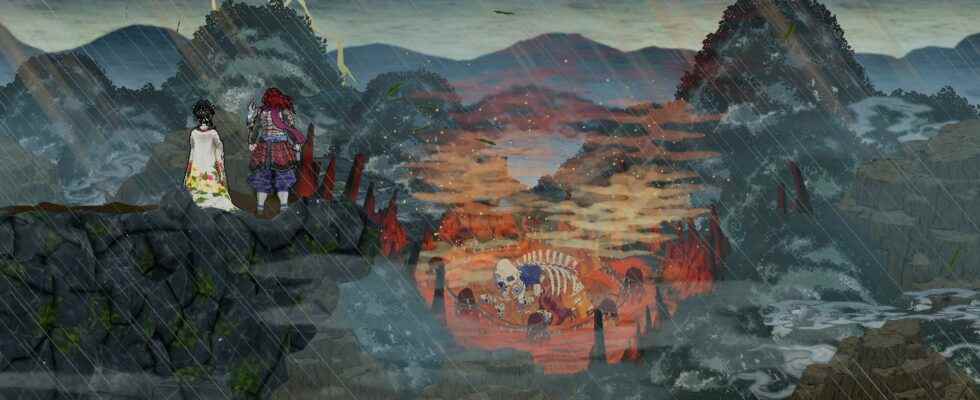In our review of the Ukiyo-e art in the Roguelike genre GetsuFumaDen: Undying Moon, we’re looking at the Switch version of the game we’re chasing demons.
GetsuFumaDen: Undying MoonRevitalizes Konami’s Famicom (NES) game, which was released in 1987 and was only published in Japan, and presents it to the world. Contrary to the original game that contains action and RPG elements, let’s examine together how Undying Moon’s Nintendo Switch version, which switched to the roguelike genre, was.
Getsufumaden: Undying Moon review
Let’s Send the Demons Back to Hell
GetsuFumaDen: I would like to briefly touch on the story of Undying Moon. The leader of the Getsu Clan defeated demons many years ago and sent them back to Hell. Still, the demon lord Ryukotsuki somehow manages to return to earth. As the clan’s 27th leader, it’s up to us to stop Ryukotsuki.
Undying Moon takes place a thousand years after the first game. Our character’s name is Getsu Fuma, the clan leader who is a descendant of the original character. After advancing in the story for a while, Getsu Renge, a ninja member of the clan, is also involved in the events. Thus, we get the chance to play with two different characters. The narration of the story, which is based on Japanese folklore, is not very prominent, even I was a little disappointed with the presentation. I don’t expect a good narration as Hades, but I wish they’d tried a little harder. It’s a shame.
Nothing Like Fighting To The Death
GetsuFumaDen: We said that Undying Moon has a different gameplay than the original game. If you’ve played the first game before (in which case you’re either a big retro fan or grew up in Japan) you won’t find the action / role-playing elements you’re used to in this game. Undying Moon is reminiscent of Dead Cells in terms of gameplay. You get two different weapons from the starting area and you try to face the demons and complete the levels successfully.
Getsu Fuma has a lot of different weapons to use. In addition to our katana, which is always waiting for us in the starting area, there are main weapons of Japanese culture such as spears, short swords, big clubs, chains, fans and umbrellas. There are also bow and arrow, rifle, bomb, magical equipment as secondary equipment. Each weapon type has its own sub-weapons and it is possible to make a combination according to your playing style. Of course, you have to be a little lucky so that the weapons you want come.
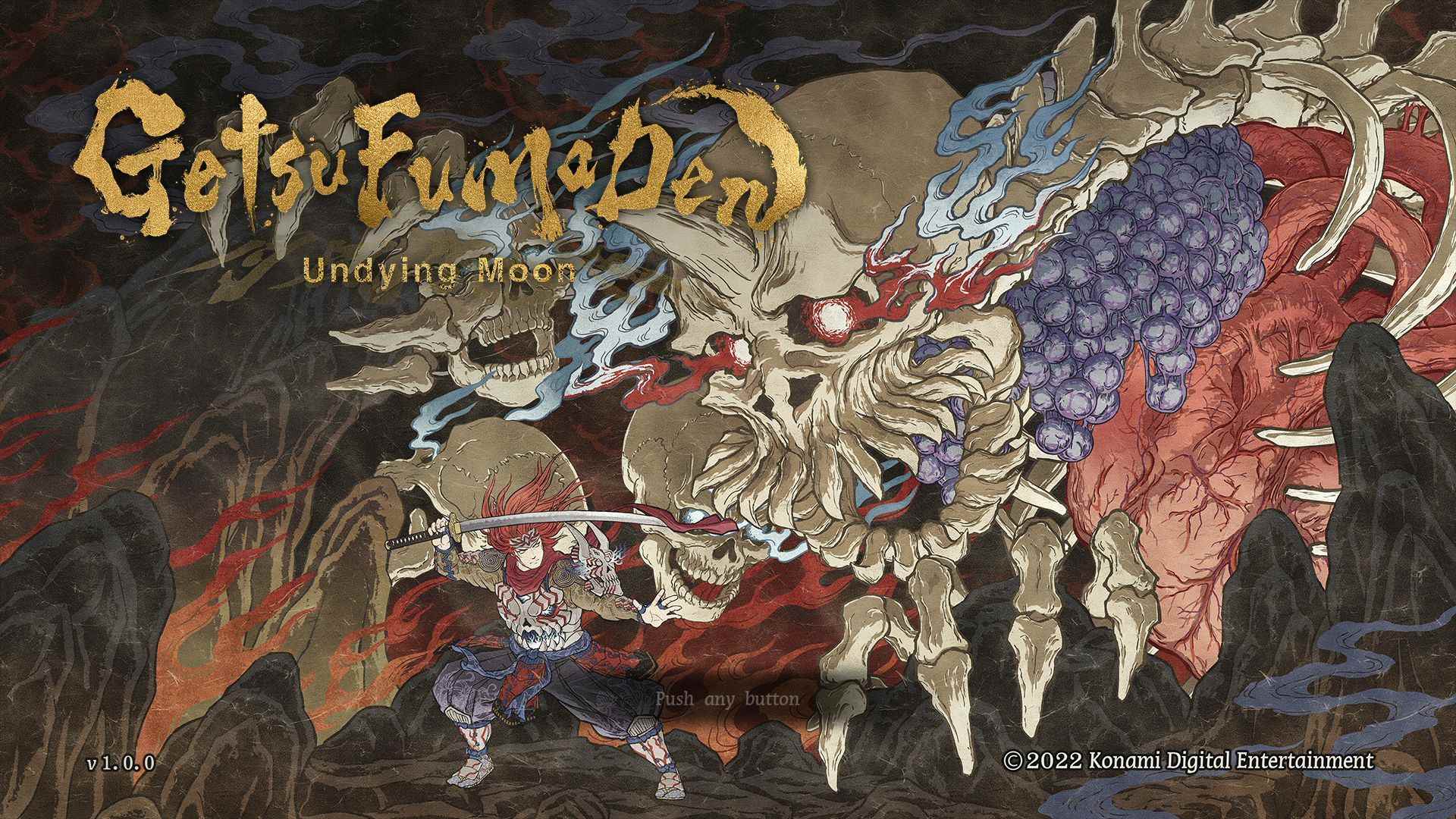
Combining the eye-catching art style of the game, the fights actually look very good, but there is a clumsiness in the gameplay. I feel like the character isn’t responding as quickly as I’d like. Aside from quickly switching between weapons and making rapid attacks, sometimes I couldn’t even get my character to attack in different directions quickly.
It’s a bit annoying that the character’s reactions are heavy, but despite this, the fights are fun. In front of us are a lot of demons that came out of Japanese folk tales. If you’re a veteran like me or have played the Nioh series, you’ll see a lot of familiar faces. Enemies are nice, beautiful and offer variety, but they’re a bit problematic. The thing I’m going to complain about is not the fact that they hit hard even in the difficulty that should be easy, we have already accepted it.
Both the chapter and the opponents are randomly generated when we start the chapter. The enemies that settled on the Randomly Generated map bothered me a lot because of the limited control of the camera and the way the enemies were cheating. It is already difficult to take down the enemy who is standing on a tiny ledge and throwing explosive rocks, and the rocks he throws can pass through the wall and land on our heads. It’s frustrating to lose valuable life points from an attack that goes through a wall in the absence of enemies.
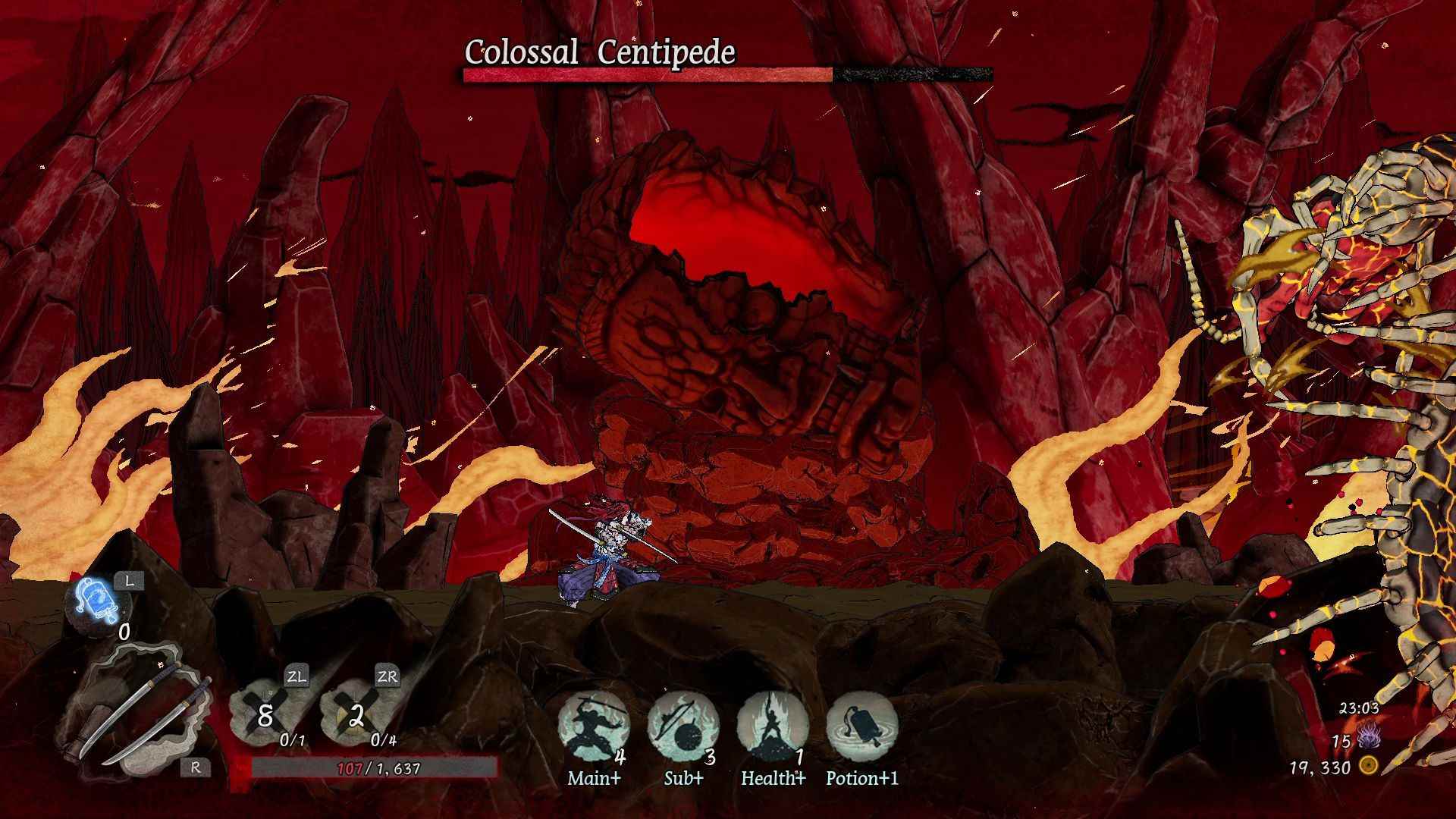
The boss fights of the game have been the most fun places to fight. The boss designs are beautiful, each has their own unique soundtrack, and none of them are frustratingly invincible. Yes, boss fights are tough, but they have to be. You can easily defeat your opponent, whose moves you learned in the first match, with the preparation you will make in the next fight. There is also the luck factor here, of course, it happens that the right equipment does not come out, but whatever. Moreover, when you defeat Getsu Renge, who appears as the boss, he joins the team as a second playable character. After I developed Getsu Fuma, I didn’t want to start over with Getsu Renge, but it’s nice that the gameplay is different and it offers a different option.
While fighting with the enemies, I have the chance to stop the attack by rolling away (dodge) or blocking / parrying the attacks. There is no problem in the block part, but I could not manage to dodge. I’m not bad at timing games, I’ve had a lot of time to improve it in games like Bloodborne, Dark Souls, but I can’t quite keep the timing in this game. Rolling is the safest form of escape. Just don’t fall into the pile-filled pit while rolling.
Speaking of pit full of piles, let me also mention that there is a problem like not knowing what awaits you when you jump down and falling into the pit due to the limited camera control of the game. We don’t fall that high, why can’t I see down? Items that complete life in the game are very limited, moreover, they are not renewed when the level is over. Even the easy mode of the game is relatively challenging and brutal. Diving into enemies as if there is no tomorrow does indeed result in death.
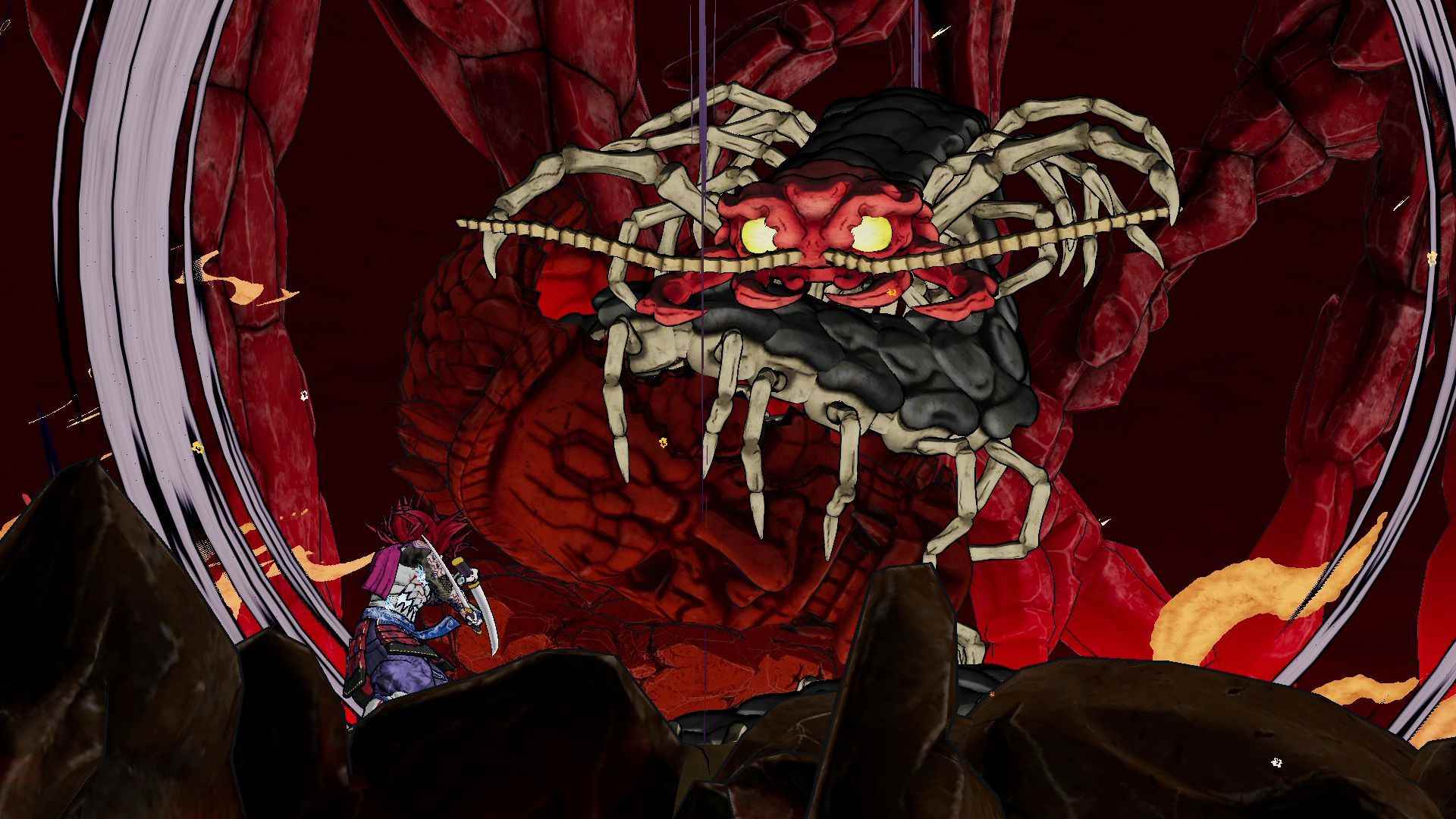
Demon Problems
Normally, I talk about the good aspects of the game in reviews and then move on to the annoying parts, but I chose to follow a different path in this game. Because every good part I have mentioned has a bad side. We can collect materials from the demons we killed in the game, but it is difficult to know exactly what they do. They are used in equipment upgrades, but each equipment requires different things, each one serves a different sub-category, there is not enough material. The interface of the game is a little weak in this regard. It does not guide the player well, it seems like it has become too complex when it could have been simple.
There’s also the Soul Devour ability, which includes choices like using enemy souls to upgrade the weapon right away, or the option to collect it and save it for vital things like max health/health potion. According to him, these improvements disappear when they die. In fact, when we die, we lose almost everything, we only manage to save 10% of what we collect, so I can say that it is a little slow in terms of development. Still it’s fun. The game is inspired by the Japanese ukiyo-e art style and looks very good visually. As you progress through the level and clear the enemies, it is possible to see the possible opponent you will encounter at the end of the level in the background. During the fight, the visuals are enriched with various effects and animations. Sometimes, you can perform special attacks that quickly reduce the enemy’s health with a kanji symbol that appears in the middle of the screen. It is visually beautiful, but the effects can sometimes get in front of the enemy and prevent you from seeing his attack.
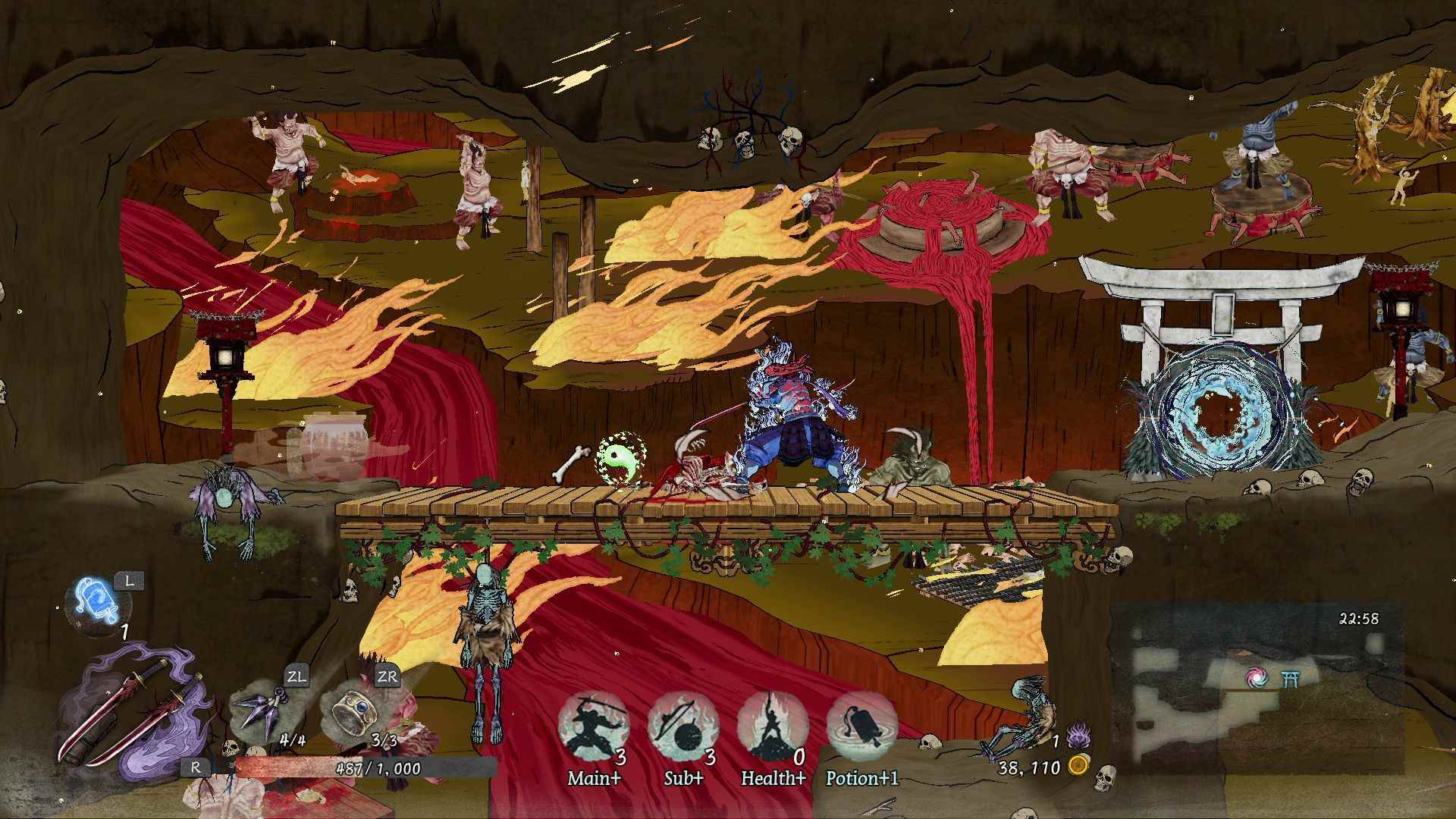
The game looks very good, but what the hell is going on in terms of Nintendo Switch performance, we need to stop here for a while. I had a very comfortable gaming experience while playing on the screen from the dock. Due to Joycon problems, I haven’t been able to pick up and play the Switch for a while, but I also try to play with my hand for at least 2 hours in order not to make missing comments in the reviews. Undying Moon is at an acceptable level in terms of performance when playing handheld, but the visuals are degraded. There is no problem when encountering one or two enemies, but the graphics quality decreases noticeably, especially in boss fights. It’s understandable to compromise on the image to preserve the game’s performance thanks to the dynamic resolution. I wish it was better.
Finally, the sound and music are great. The only part of the game that I can’t say “it’s nice, but it has this problem” is the sound and music. Sounds are pretty good overall. The music is magnificent. Episode music with traditional Japanese tones, different types of boss music that instantly puts you in the mood for a boss fight, reggae tones playing in the shop, the game handled almost every genre of music and did a very good job.
Conclusion
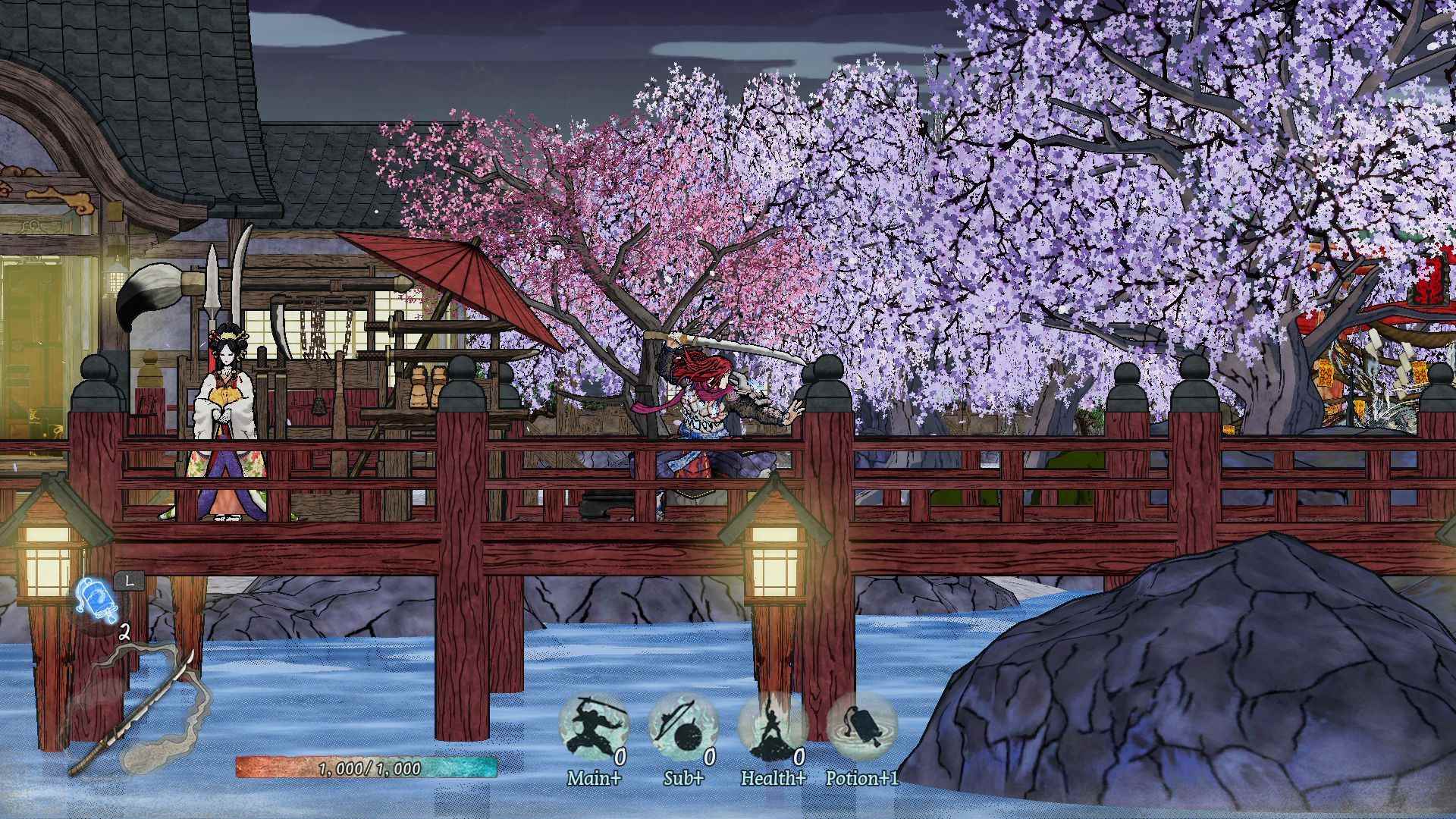
GetsuFumaDen: Undying Moon is not a perfect roguelike game. If he wants to compete against opponents like Dead Cells, he needs to do more than that. However, what I said does not mean that the game is bad, I had a lot of fun while playing. Undying Moon is a game that takes examples from previous similar games but failed to present them in their best form. The game’s own shortcomings aside, it’s a little annoying that the Nintendo Switch version drops the graphics in handheld mode.
It is both surprising and good news that Konami has released a game after a long time, with an IP that it hasn’t touched for years. I hope that Konami, which has been keeping Undying Moon in early access for a while and finally released it as a full version, will continue to make new games for their old brands and publish them more properly in the future. With a $25 price tag for the Nintendo Switch, it’s the price it wants worldwide. enough to give A game featuring content GetsuFumaDen: Undying Moon. From the Turkish side, the price of the game is low compared to the content and graphics quality offered. via Steam If you have the chance to buy it by paying 40 TL, I suggest you make your choice here.
